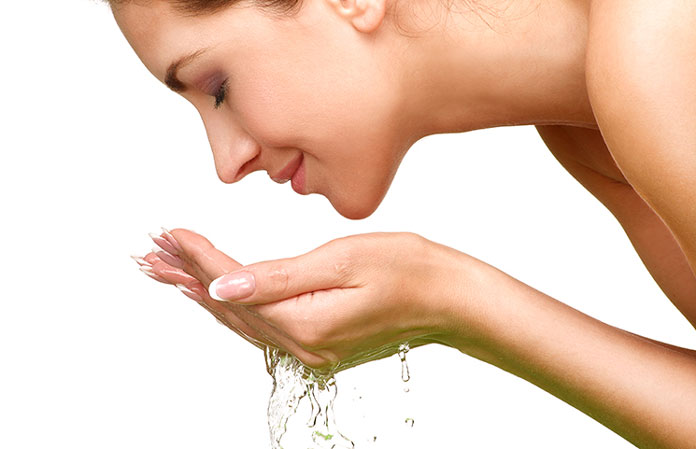Minerv Cosmetics is a line of bioplastics that can be used in lieu of plastic petrochemical-based “microbeads” in cosmetics produts. Here’s our Minerv Cosmetics review.
What Is Minerv Cosmetics?
Minerv Cosmetics is a bio-engineered replacement for microbeads sourced from plant fibers – in particular plants used to manufacture sugar such as the sugar beet and sugar cane.
Microbeads created in this fashion are completely biodegradable and do not pose the same environmental problems that are created by plastic microbeads, which can accumulate in and pollute water sources because they don’t biodegrade.
Nobody really thought about how plastic microbeads might impact the environment when they were first introduced. These infinitesimally small pieces of plastic are easy to overlook, but when the entire world began using products with microbeads, the environment began being flooded through wastewater runoff.
This water eventually gets treated and put back into the environment, but plastic microbeads are too small to be filtered out properly; worse yet, these beads end up back in places where they end up interfering with the ability of aquatic animals to survive.
Meanwhile, microbeads created by Minerv Cosmetics don’t pose any of these problems. Completely organic, these microbeads are considered a Certified Biobased Product by the United States Department of Agriculture (USDA). This certification verifies that the renewable and biobased ingredients meet or exceed the criteria laid down by the USDA itself for safety to humans and the environment.
Using Minerv Cosmetics instead of plastic-based microbeads has the potential to have a major positive impact on the environment, not just in the US but around the world in places where microbeads are used in personal care products.

Minerv Cosmetics Features: How Does It Work?
Minerv Cosmetics are substances known as bio-cosmetics, which are cosmetic materials created through the use of plant matter that has undergone a specific sugar fermentation process.
In particular Minerv Cosmetics are microbeads created from biological sources that fully decompose and do not accumulate in the environment. This makes the product orders of magnitude safer to be used in any number of cosmetics in lieu of plastic microbeads. Such products include exfoliating face washes, toothpastes, and shampoos and conditioners to name but a few.
This is highly advantageous because many countries have begun to ban plastic microbeads, which have been used in many cosmetics since the 1970s because of their exfoliating properties.
Plastic microbeads work quite well in cosmetics, but the end result is that these non-biodegradable pieces of miniature plastic end up clogging water sources and poisoning marine animals. Using Minerv Cosmetics instead of plastic microbeads provides ways to continue marketing microbead cleansers in these countries.
Who Makes Minerv Cosmetics?
Minerv Cosmetics is the brainchild of Bio-on, an Italy-based manufacturer devoted to finding ecologically-friendly methods for creating plastic alternatives, like microbeads for the cosmetics industry, that will not contribute to pollution and that are safe for humans and the environment.
Founded in 2007 by several entrepreneurs with the goal of creating 100% ecological and sustainable materials, Bio-on focuses on on-demand total engineering of products as well as green building architecture, production, and design.
Bio-on unveiled Minerv Cosmetics to the world in 2016 at a cosmetics contest in Budapest, Hungary, drawing a large measure of interested from major cosmetics manufacturers in attendance such as L’Oreal, L’Occitane, Cargill, Clairant, and Yves Rocher. The cosmetics industry as a whole has expressed high levels of interest in the product, as it helps solve a major problem for cosmetics manufacturers.
The chairman of Bio-on is Marco Astorri, a veteran corporate innovator who has worked in the fields of marketing and design, electronics, and manufacturing in the past. Other members of the Bio-on Board of Directors include executives that Astorri has partnered with in the past in other endeavors.
Minerv Cosmetics Ingredients
Minerv Cosmetics are almost exclusively plant-based. Through a proprietary procedure that incorporates the fermentation of sugars, Bio-on can transform plant matter into biodegradable microbeads. Plants can be used in the process, as well as animal byproducts, and Bio-on has successfully created Minerv Cosmetics from sugar beets, sugar cane, glycerol from bio diesel, potatoes, animal fat, fruit, vegetables, wood, domestic wet waste, and wine production waste.
Specifically, Minerv Cosmetics microbeads are made from polyhydroxyalkanoate (PHA), a linear polyester naturally occurring as a result of the bacterial fermentation of sugar. The substance is flexible enough to create more than 100 differing monomers, making it possible to produce materials that don’t just mimic microbeads but have wide-ranging properties.
Minerv PHA is a high-performance PHA biopolymer, and can be used to create a wide variety of bioplastics. Suitable for injection and extrusion molding, objects made from Minerv PHA can replace items made from PET, PP, PE, HDPE, and LDPE plastics, providing a green alternative to these highly pollutant materials used in all types of plastic packaging. These uses range from beverage cups, plastic wrap, water bottles, packing and shipping materials, and restaurant takeout containers to name a few.

Minerv Cosmetics Pricing
Minerv Cosmetics are yet to be available as an alternative in common cosmetics. Bio-on announced in March of 2017 that its first production plant will open in 2018. At that time, Bio-on will begin making Minerv PHA to be used in cosmetics, packaging, and other uses.
This means that there is no definitive pricing for cosmetic products that make use of Minerv Cosmetics. This will change going forward.
Minerv Cosmetics Reviews: What Do Customers Have to Say?
Media response to Bio-on’s Minerv Cosmetics has been quite positive. Creating a truly sustainable bioplastic to replace the use of petrochemical plastics is a universal goal, and Bio-on seems to have met that goal successfully.
The world is now waiting to see how mass-production of Minerv PHA will be handled in Bio-on’s soon-to-be-opened manufacturing facility, but hopes are high that it will be successful.
Pros:
- Decomposes Safely– Minerv Cosmetics microbeads decompose safely in water sources. This means that these microbeads end up becoming a source of nutrition for aquatic species that would otherwise have to cope with plastic, non-biodegradable microbeads invading their habitats and causing problems by disrupting the food chain.
- Sustainable Materials – Creating microbeads from plant materials is much more sustainable than creating them out of plastic, as petrochemicals are a non-renewable resource. Many of the sources that can be used to create Minerv Cosmetics microbeads can be grown in a sustainable, ecologically responsible manner that reduces negative impacts to the environment. Other sources of Minerv PHA can be from waste products like animal fats that can be processed into the bioplastic instead of being disposed of in landfills, further increasing the usefulness of the product.
Cons:
- Unknown Cost – There’s no current information on how much it costs to create Minerv PHA in comparison to making traditional petrochemical-based plastic materials. If it’s significantly more expensive, this could result in higher retail prices in products that make use of the bioplastic. This could also impact how far and wide that Minerv PHA products will be adopted by other manufacturers.
Minerv Cosmetics Review Summary
Right now, you can’t purchase any products made with Minerv Cosmetics. This may very well change in the future – thanks to Bio-on’s first production facility opening its doors in 2018 – but for now you have no choice but to wait. The technology behind creating Minerv PHA is complex and takes time to scale up to wholesale manufacturing levels.
However, if you are interested in being a socially conscious consumer that prides themselves on seeking out sustainable consumer packaging and eco-friendly products, you may want to be patient and see when the first Minerv Cosmetics-branded products with Minerv PHA microbeads hit the market.
These will be almost certainly paraded around, as the main selling point of any products made with Minerv Cosmetics will be how eco-friendly and socially responsible these products are.
If you live in the United States, this is likely to be a very big deal, as plastic microbeads are currently banned by law. Minerv Cosmetics microbeads will likely qualify for an exemption based on their status as safe, non-toxic, and completely biodegradable, and you will once more find cosmetic products with microbeads on American store shelves.
These can take the shape of everything from facial cleansers to toothpastes, so be prepared to see “made with biodegradable microbeads” or something similar on product labels in the near future.
This all depends of course on whether making personal care products with Minerv Cosmetics will be cost-effective. You may see a slight increase in the price of cosmetics with Minerv PHA in them, but for the most part knowing that you’re not contributing to the pollution of the environment will be worth the added expense for many.
Overall, we would certainly recommend buying products made with Minerv Cosmetics microbeads once they hit store shelves. The technology is sound and it’s poised to make a real difference for the environment, and we as humans need to adapt to new ways of living if we want to remain good stewards of the Earth and preserve it for future generations.









